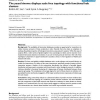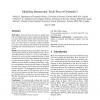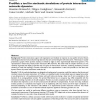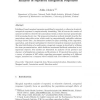5 search results - page 1 / 1 » Modeling interactome: scale-free or geometric |
TNN
2010
13 years 15 days ago
2010
In this paper we provide theoretical and numerical analysis of a geometric activity flow network model which is aimed at explaining mathematically the scale-free functional graph s...
BMCBI
2005
13 years 5 months ago
2005
Background: The availability of interaction databases provides an opportunity for researchers to utilize immense amounts of data exclusively in silico. Recently there has been an ...
BIOINFORMATICS
2004
13 years 5 months ago
2004
BMCBI
2007
13 years 5 months ago
2007
Background: Protein interactions support cell organization and mediate its response to any specific stimulus. Recent technological advances have produced large data-sets that aim ...
CSDA
2006
13 years 5 months ago
2006
Likelihood-based marginal regression modelling for repeated, or otherwise clustered, categorical responses is computationally demanding. This is because the number of measures nee...




